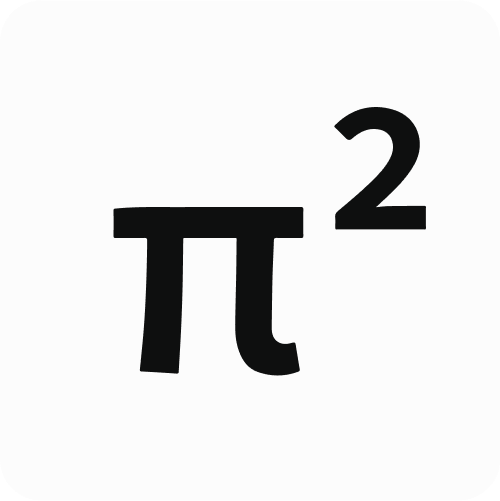Pi Squared’s Integration with Wormhole NTT
Learn how USL's integration with Wormhole is a convergence of advanced technologies enhancing security and efficiency for cross-chain operations.

Seamless Cross-Chain Interoperability with Mathematical Certainty: Integrating Pi Squared’s USL with Wormhole’s Native Token Transfer Framework
In the dynamic and swiftly evolving blockchain landscape, interoperability stands as both a critical challenge and catalyst for innovation. As applications aim to leverage the unique capabilities of multiple blockchains, developers face complexities arising from differing programming languages, VMs and consensus mechanisms. Wormhole addresses these challenges through its Native Token Transfers (NTT) framework — an open, flexible and modular token transfer mechanism facilitating secure asset transfers across numerous blockchain environments, securing tens of billions of dollars in value across the blockchain sphere.
Today we are thrilled to announce the integration of Pi Squared’s Universal Settlement Layer (USL) as a Transceiver within the NTT framework. By bringing the mathematical rigour of Pi Squared’s verifiable computing platform together with the robustness of Wormhole’s infrastructure, we are charting a course toward more interconnected, efficient and verifiably secure blockchain infrastructure.
Understanding Wormhole’s Native Token Transfer Framework
NTT offers an elegant solution to interoperability across disparate networks, abstracting the complexities of transferring tokens between blockchains and enabling developers to focus on building applications that harness the unique properties of each chain without grappling the underlying mechanics of the VM.
At the heart of NTT is the concept of modular Transceivers — responsible for the transmission and reception of messages across blockchains. This modularity permits the integration of a range of attestation methods and any verification mechanism an integrator wishes to leverage, providing developers with the flexibility to tailor security and performance characteristics to their specific needs and future-proof their multichain messaging layer.
Its design prioritises scalability and extensibility, so as new blockchains emerge and existing ones evolve, NTT should continue to adapt to incorporate these changes. This approach enables developers to build blue-chip multichain applications that are capable of leveraging the latest technological advancements and enhancements.
Introducing Pi Squared’s Universal Settlement Layer
Pi Squared is pioneering a new paradigm in verifiable computing through its Universal Settlement Layer (USL) and the Proof of Proof protocol. USL is a universal, decentralised network capable of validating and settling any mathematically provable claim. It facilitates true interoperability and trustlessness in blockchain interactions — transcending the limitations of traditional systems.
The core idea is that any computation or transaction that can be mathematically proven can be settled on USL. This includes proofs of program execution, instantiated transactions with pre-states and post-states, or even entire blocks; essentially any claim that can be represented mathematically. By leveraging formal semantics and programming languages, USL provides mathematical proof that a system started in one state and transitioned to another.
USL is not a traditional blockchain but a decentralized network where each claim is independently verifiable, forming a set of elements rather than a chain of blocks or transactions. The method of verifying these claims is flexible, allowing for various proof systems and verification methods. Validators can accept any type of proof provided with the claim, be it a SNARK, a STARK, or even re-execution of the computation. This design minimises the trust base and enhances security by allowing participants to choose their preferred method of verification.
Embracing a “Bring Your Own Language” philosophy, its universality is further enhanced by its language and VM agnosticism. It empowers developers to write smart contracts in any programming language, eliminating barriers to entry and laying the grounds for a diverse and expansive developer community to get involved.
The technical foundations of USL are deeply rooted in decades of research in formal semantics and logic spearheaded by Prof Grigore Rosu, particularly through the K Framework which allows for formal specification of programming languages and VMs, and Matching Logic which serves as the foundation for K.
The USL Transceiver Implementation
This integration represents a convergence of advanced technologies aimed at enhancing the security and efficiency of inter-chain operations, predicated on the recognition that mathematical certainty is a key to ushering in the maturation of blockchain infrastructure. Below detailed are the specifics of the integration:
USL Transceiver Mechanics
Within the NTT framework, USL is integrated as a custom Transceiver. This Transceiver handles the sending and receiving of NTT messages with USL’s flexible approach to claim verification.
1. Transaction Initiation and Claim Construction:
- A user initiates a token transfer on the source chain by interacting with the NTT Manager contract, which passes the transaction details to the USL Transceiver.
- The USL Transceiver constructs a Transceiver Message containing the transfer details and forwards it to the USL core contract.
2. Event Emission and Off-Chain Claim Generation:
- The USL core contract stores the Transceiver Message and emits an event with data sufficient to reconstruct the claim.
- An off-chain claim generator monitors these events, retrieves the necessary data from the source chain, and constructs the claim along with its validity proof.
3. Claim Submission and Validation:
- The claim and its validity proof are submitted to the USL network, where validators independently verify the claim based on the provided proof.
- Validators do not need to store the entire blockchain state; they acquire only the data necessary to verify the claim.
4. Inclusion Proof Generation and Relaying:
- Once validated, an inclusion proof is generated to attest that the claim is part of the validated set within USL.
- A relayer retrieves the validated claim and inclusion proof and submits them to the USL Transceiver on the destination chain.
5. Verification and Transaction Finalization:
- The USL Transceiver on the destination chain verifies the inclusion proof and processes the claim.
- The corresponding NTT Manager contract on the destination chain finalizes the NTT transfer, resulting in the minting or unlocking of tokens for the user.

This approach to cross-chain messaging introduces some bleeding-edge innovations worth considering:
- Elimination of Multiple Circuits: By employing a single ZK circuit for mathematics, the USL eliminates the need for multiple specialized circuits. This streamlines the verification process and reduces complexity compared to existing systems.
- Flexible Trust Model: Validators have the flexibility to choose their preferred method of claim verification, whether by accepting zero-knowledge proofs (e.g., SNARKs, STARKs) or by re-executing the computation independently.
- Scalability Through Independent Claim Verification: Claims are self-contained and independently verifiable, allowing for parallel processing and increased throughput without the need for validators to maintain full blockchain states.
- Complementing Existing Infrastructure: The integration enhances the NTT framework by introducing a mathematically rigorous method of claim verification, broadening the spectrum of available attestation methods.
- Mathematical Proofs as the Basis for Trust: Central to USL’s approach is the notion that computation itself is proof. Every computational claim is treated as a theorem, and by generating formal proofs of these claims using K and Matching Logic, USL ensures correctness by construction.
With the USL Transceiver, integrators benefit from the scalability and efficiency introduced by its lightweight validation process. The adjustable trust base with flexibility in proof methods allows them to tailor security models according to varying risk tolerances and compliance needs.
For more detailed information on the Native Token Transfers architecture, please read the detailed documentation or reach out directly to the Pi Squared team if this technology is of interest to you or your project.
Future Possibilities, Closing Thoughts
While the current build focuses on token transfers through NTT, the underlying principles and technologies of USL open avenues for broader applications. The flexible approach to claim verification allows for the incorporation of new proof systems and verification methods as they emerge, ensuring the system remains at the forefront of advancements in a swiftly-evolving environment with robust demands and needs.
The ability to represent and verify any mathematically provable claim could also extend to more complex multichain interactions, such as smart contract calls and data exchanges. By enabling verification through any means possible, USL paves the way for sophisticated services requiring high degrees of computational integrity.
This integration marks a significant step toward achieving true interoperability and trust minimization in multichain interactions. Combining the principles of universality and formal verification with collaborative spirit, we are charting a course toward a more secure and interconnected ecosystem.
Watch the Universal Settlement Layer for Wormhole Presentation at Devcon.

